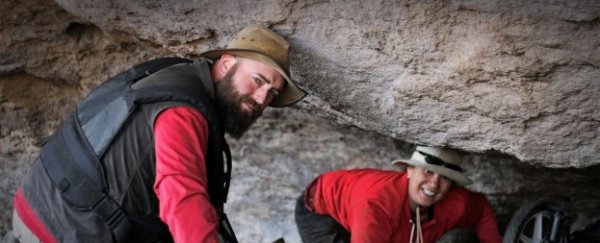Newly investigated sites in the Peruvian Andes show that humans lived in extreme environments 1,000 years earlier than previously thought.
The extreme cold, severe lack of oxygen, high levels of solar radiation and absence of food at high altitudes made colonisation by early humans incredibly difficult.
In South America the tree line did not even extend beyond 4,000 metres above sea level until 10,000 to 11,500 years ago. This led scientists to believe it would be almost impossible for early human settlers to inhabit these areas as sourcing wood for fires and plants for food would be too much of a challenge.
However, new findings have shown that early South Americans, known as Paleoindians, conquered the inhospitable landscape 4,500 meters above sea level over 12,800 years ago. This is only 2,000 years after the oldest known archaeological site for humans in South America at Monte Verde in Chile. It is also over 1,000 years earlier than scientists thought possible.
The findings come from a site in the Pucuncho Basin, located in the Southern Peruvian Andes, called Cuncaicha. It is a rock shelter 4,480 metres above sea level.
Researchers also investigated a stone-tool workshop site called Pucuncho, which is 4,355 metres above sea level.
At the sites, the team of scientists found stone tools; taruka deer, vicuña, and guanaco camelid bones (close relatives of alpacas and llamas); starchy plant remnants; and primitive artwork.
The ancient tools were designed for hunting but also for fashioning animal hides into clothing, bags or blankets, indicating that humans called these caves home instead of just using the surrounding areas as a hunting range.
"Research really hasn't been done here up until now, because it's so remote," said co-author and archaeologist Sonia Zarrillo (pictured right) from the University of Calgary in Canada.
"Our team hiked up to three or four hours to get to these sites. That was a climb, carrying all of our gear, camp equipment and food. And it freezes every night. Sometimes it snows. These are incredibly hard sites to access."
The research was published in the journal Science (24 October).
Many people living in high altitudes have specific genetic adaptations, such as Tibetans living in the Himalayas, which makes it possible for them to survive at such heights.
Modern Andeans have higher metabolic rates, larger lung capacity and higher haemoglobin concentrations than average humans.
"Was this adaptation present 12,400 years ago? We don't know for certain," said Zarrillo. "What we're demonstrating is that these people either already developed that adaptation, or, it was possible for them to live in these altitudes for extended periods of time regardless."
Sources: EurekaAlert, Reuters
